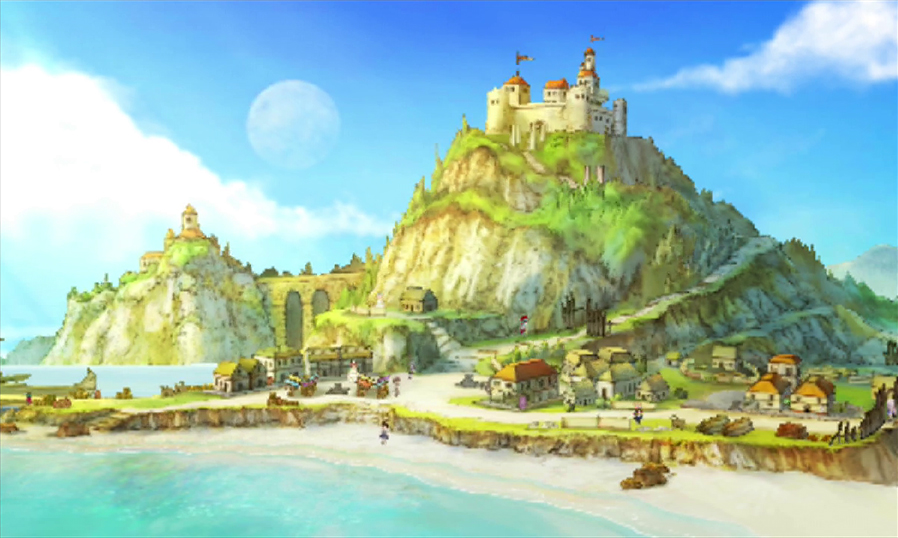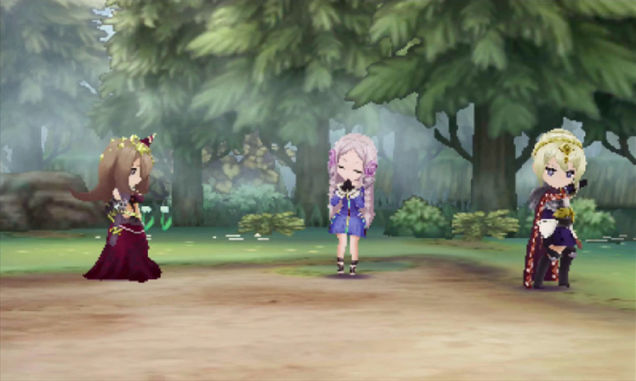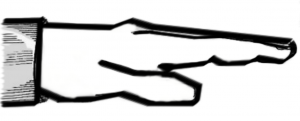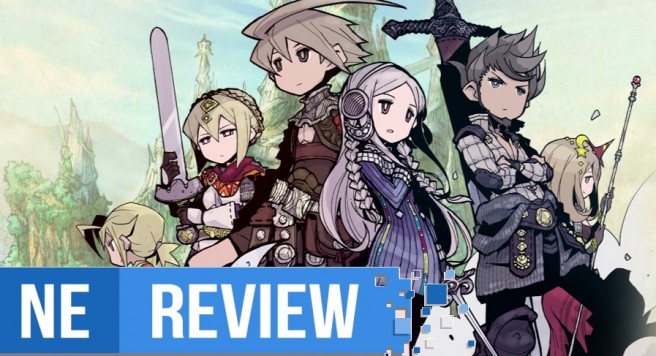[Review] The Legend of Legacy
System: 3DS
Release date: October 13, 2015
Developer: FuRyu
Publisher Atlus
Author: Dennis
At first glance, The Legend of Legacy seems to be an amalgam of things – and it is. Legends are brought together to bring you this title in the form of Final Fantasy XIII composer Masashi Hamauzu, Chrono Trigger writer Masato Kato, SaGa illustrators and designers Tomomi Kobayashi and Kyoji Koizumi, with the inclusion of many other former developers from Square and Level-5. You can feel the influence and inspiration of The Legend of Legacy exude from all of these creators, allowing the game to thrive and revel in it artistically.

One of the things you’ll notice right away about The Legend of Legacy is that you’ll be thrown into the action rather quickly. You can select from one of seven characters, all of whom have a fixed party at the beginning of the game. Each character will have its own class and set of attributes in the form of Guard, Support, and Attack. Moreover, each of these will have their own level that will rise depending on how you act in battle.
Once you’ve selected your character, you’ll be brought into the world of Initium. It is here you meet the king and, after a brief conversation with him, be sent on your way to journey across the world of Avalon, exploring the many forests and dungeons the game has to offer. The first three locations are rather straightforward and given to you. But as soon as those are complete things start to get a bit more complicated on what it is to do next.
The Legend of Legacy aims at giving the player freedom of choice. You are free to explore whichever locations you’d like in any order while attempting to progress the story, but it ultimately ends up feeling like a shallow dungeon crawler because of its lack of enemies and NPCs which are placed sporadically throughout the world. You’ll be given maps that appear empty, but as you traverse through the locations in the game, they’ll begin to magically fill up. Staying true to the sense of challenge that freedom brings, there’s no sign that signifies that you’re making progress. The maps are void of any direction and instruction, save for a few arrows here and there showing exits.

The battle system is fairly basic, but due to this simplicity it takes off a bit of stress the player might feel. This makes the act of battling one that doesn’t become tedious or unnecessarily convoluted for the sake of innovation. I found this to be extremely pleasing as I was immediately able to get into the game and have fun, versus sitting there for a prolonged amount of time figuring out every detail of the UI, hoping I don’t mess something up. Though the enemies can become a challenge quickly, the battle system is quite forgiving.
During some fights, if you were to die, you have four options. You can restart at the beginning of that current fight, at the beginning of your current map, your last save, or by returning to the main menu. All these options make it nice to give you the choice of wanting to go immediately back into it, or simply take a breather and gain a few more levels before attempting that fight once again.
A neat little part of the game is not having to carry around consumables. Escaping is always successful, making the worry of not being able to go away, reducing stress in battle further. After every fight, your party and you will be fully healed and cured of any illness you may have acquired in a fight.

In battle, you are given the ability to have multiple party formations which utilize the Guard, Support, and Attack levels of each character in a faction. When you first start the game you are taken through a tutorial sequence to understand how it works. To find more formations, travel around the world and talk to the NPC’s you run across. If you can’t wait to find those NPC’s, you are given the ability to craft your own, be sure to give them a name.
What makes this game different from a typical RPG is the way levels are raised and weapons are. As stated earlier, each stat has its own level and raises depending on how often you attack, support, or guard others in battle. Weapons also have their own various skills, thus simply buying a better weapon than the one you currently have isn’t always the best choice of action. This makes for a very unique experience when it comes to leveling and battling, as you’ll have to learn how to make use of everything you have while figuring out the best way to go about defeating your opponent. As much as I appreciate the simplicity of the mechanics in battle while also adding a layer of strategy, it’s quite difficult to figure out how close you or your weapons are close to a level. With no level bar or any indication, it gives your characters a sense of randomness and is unrewarding.

As great as it is that The Legend of Legacy doesn’t hold your hand and has the sense of old-school titles with its lack of direction, it also suffers from not providing clues as to what to do next while you explore the game. The story is quickly forgotten while you roam around trying to figure out where to go and what to do – a shame really for an RPG where plot is key. Every part of this title is beautiful and excels in everything it does except for gameplay, which can be frustrating if you’re spending hours upon hours trying to complete it. It can be difficult in the end to feel any sort of deep connection to the characters or world involved when outside of aesthetic and music composition, you have a world filled with mundane tasks as well as people and enemies that don’t exactly breathe life into the overall experience.

As a spiritual successor for SaGa, and garnering influence from both classic and modern RPGs such as Bravely Default, The Legend of Legacy delivers a fun yet recycled RPG experience that appeals to casual and hardcore gamers alike with its simple mechanics yet grind-worthy enemies and do-it-yourself quests. The music in every scenario— whether it be boss fights, Initium, various locations, and so on— is gorgeous in every sense of the word. Don’t be surprised if you find yourself humming along with the catchy compositions or feel relaxed by the score that complements your adventure as you progress.
While The Legend of Legacy has many key points that keep your interest, the lack of an engaging story and direction could make some feel as if they are mindlessly wandering around the game with no real end-goal. Due to this, at times it can make the game feel empty. However, overall, The Legend of Legacy is a beautiful game that’s best enjoyed in short bursts instead of your standard RPG which would make you want to sit for hours at a time, grind like crazy, and get as much done as possible. The Legend of Legacy tries to find the perfect balance for both casual and hardcore gamers alike, making it extremely accessible. As a result, it hovers on the balance that both benefits the title while also losing a bit of appeal. It gives off the aura that it should have been a much more condensed eShop exclusive title to celebrate great minds coming together, possibly split into little portions of itself, much like the Guild series from Level-5 (Attack of the Friday Monsters!, Liberation Maiden, Starship Damrey).
